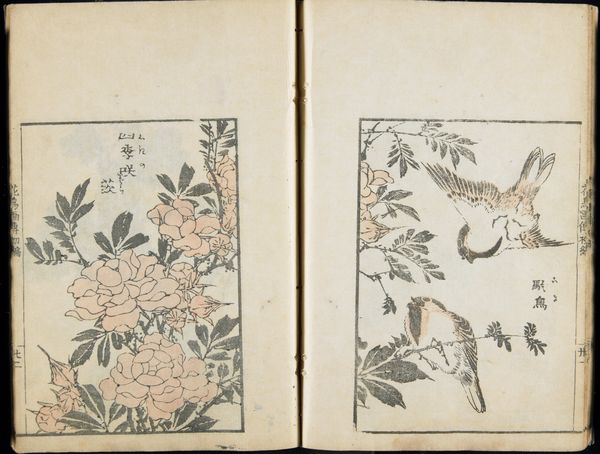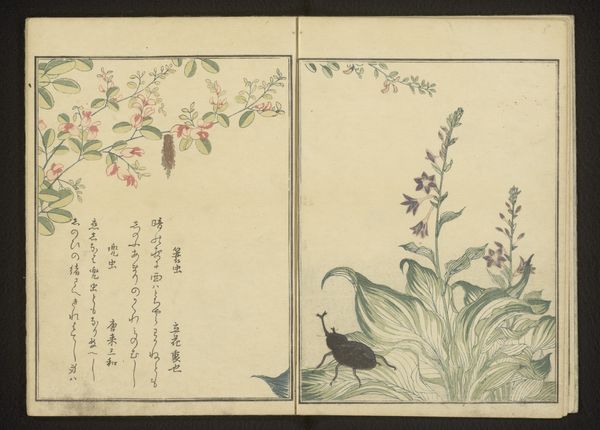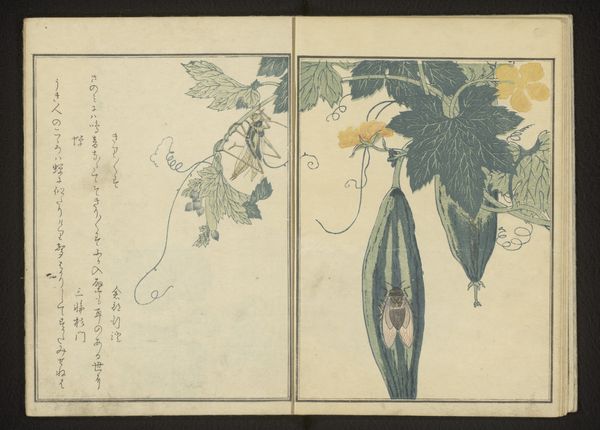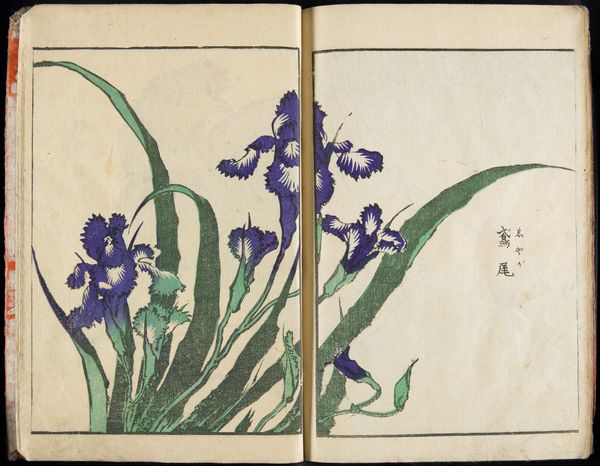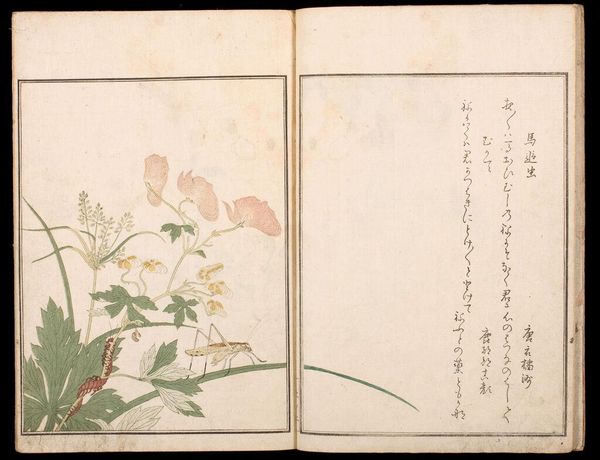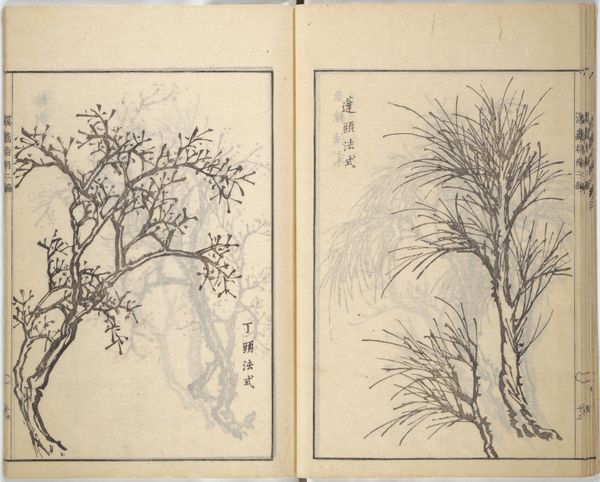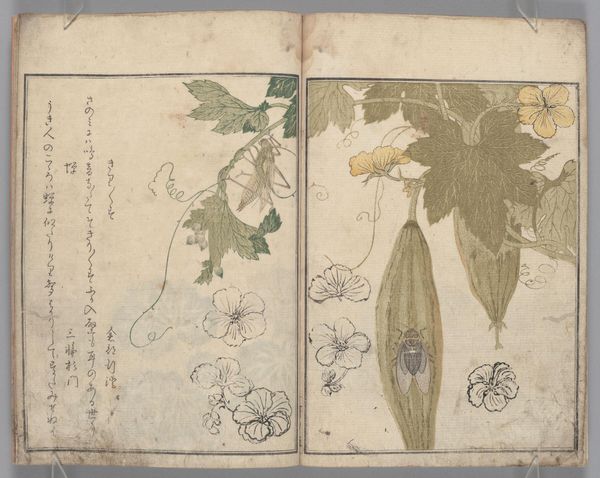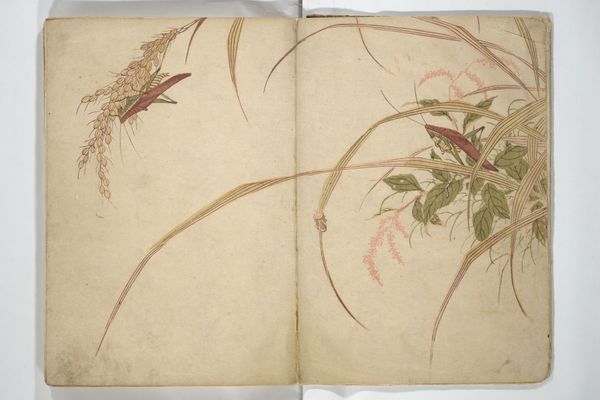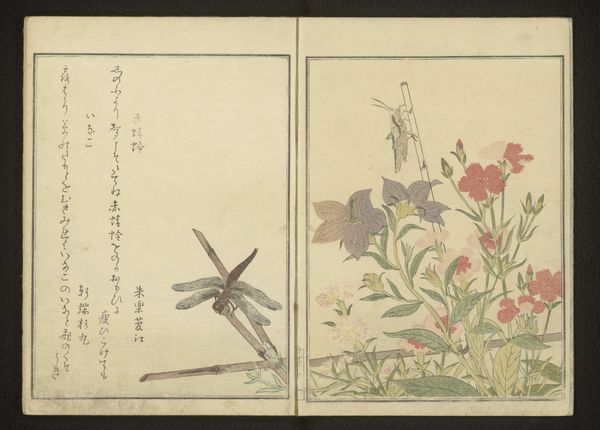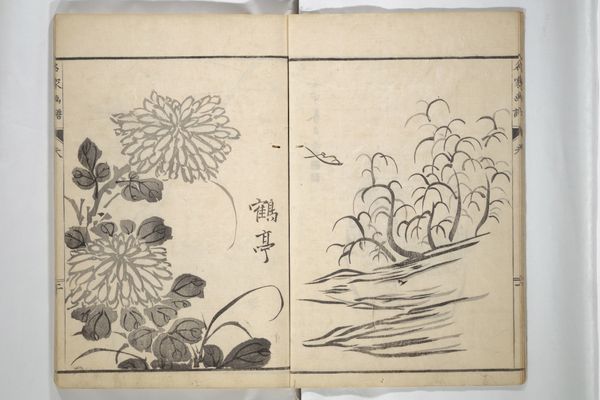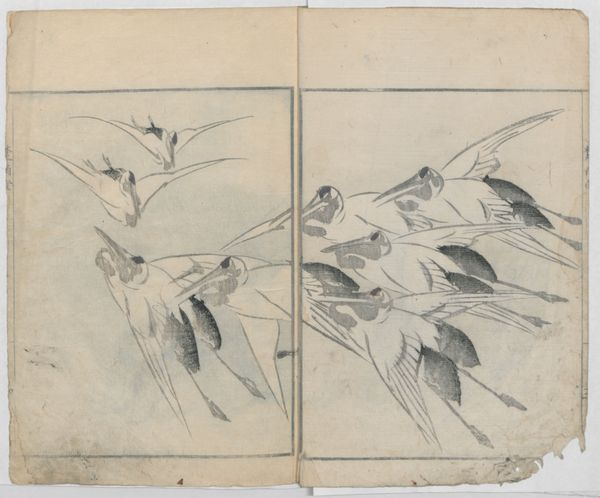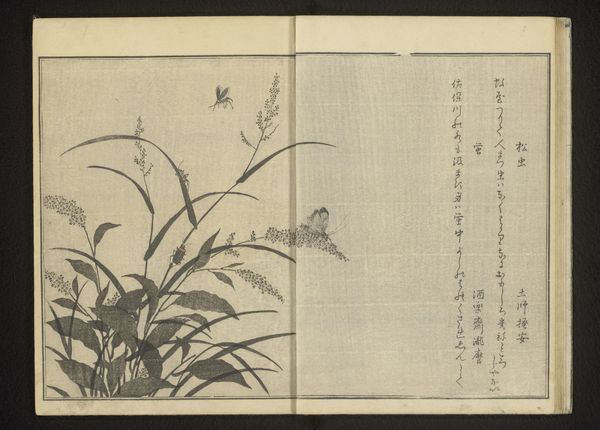
Transmitting the Spirit and Revealing the Form of Things- Hokusai's Pictures c. 1810s - 1820s
0:00
0:00
drawing, paper, ink
#
drawing
#
asian-art
#
landscape
#
ukiyo-e
#
paper
#
ink
Dimensions: 9 x 6 1/4 x 5/16 in. (22.9 x 15.8 x 0.8 cm) (outer frame)
Copyright: Public Domain
Curator: So, what catches your eye about this double-page spread from Hokusai's "Transmitting the Spirit and Revealing the Form of Things- Hokusai's Pictures," made with ink on paper around the 1810s or 1820s? It’s quite different from his landscapes, isn’t it? Editor: It is! The directness of the observation feels very grounding. Each panel spotlights these unassuming plants, almost like scientific illustrations. I am curious what informed his choice of media and subject matter. Curator: That's a great starting point. Consider the physical aspects – ink, paper. How do these materials, likely commonplace at the time, reflect the work's broader purpose? Ukiyo-e prints like this were often mass-produced; how does this book function within a larger system of art consumption and knowledge dissemination in 19th-century Japan? Editor: That's fascinating to consider. It’s not just about the image itself, but the whole industry around producing and distributing it. It also begs the question of whether Hokusai himself was involved in the entire production cycle from design to the book binding. Curator: Precisely. Think about the labor involved. These books weren't solely the product of a single "artist" in the Western sense. Multiple artisans were involved in the design, block carving, and printing. Does recognizing this collaborative production shift your understanding or appreciation of Hokusai’s contribution? Editor: It does reframe things. I start to appreciate that Hokusai wasn’t just an individual genius but someone working within a very specific material and economic framework. Knowing that more people participated in this piece definitely challenges some assumptions I’ve internalized about fine art and authorship. Curator: And by understanding the context of its creation—the materials used, the labor involved, and its role within a wider system of production and consumption—we can really start to unpack its layers of meaning. Editor: Absolutely, this helps reveal so much about how Hokusai's work existed in society.
Comments
No comments
Be the first to comment and join the conversation on the ultimate creative platform.
